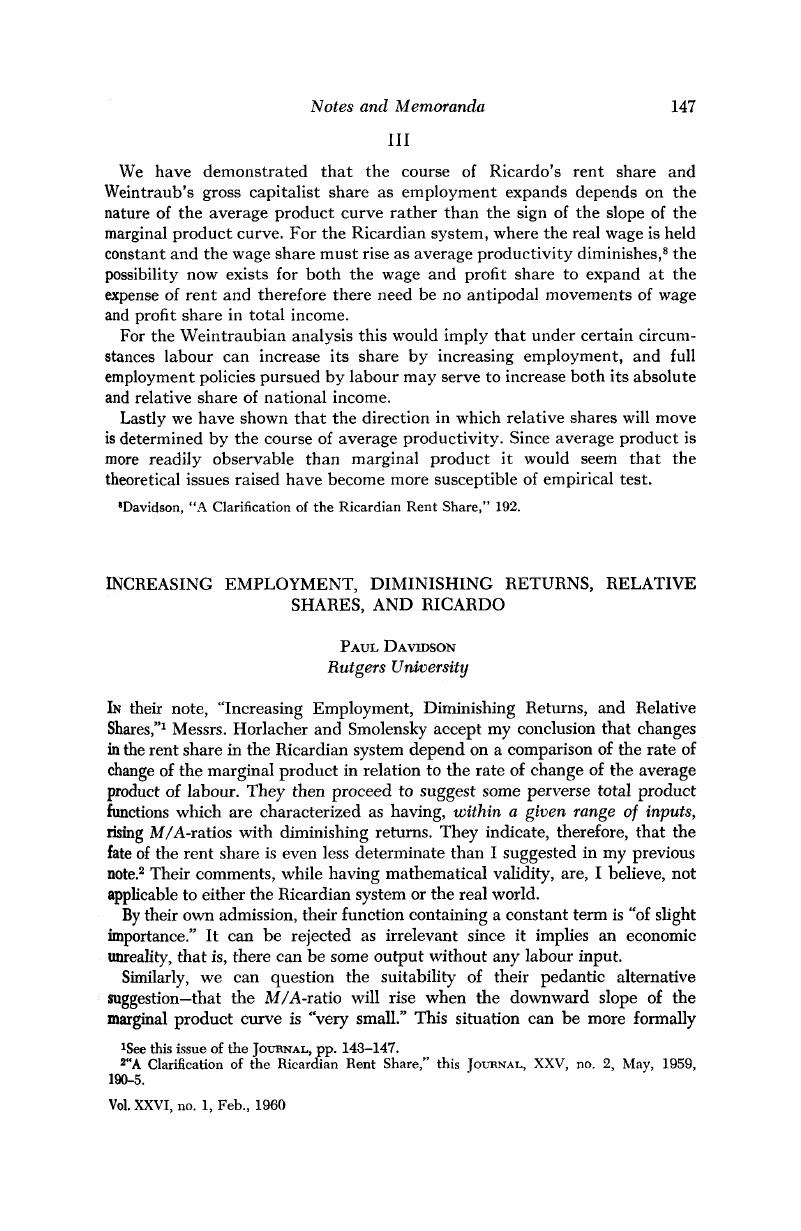Article contents
Increasing Employment, Diminishing Returns, Relative Shares, and Ricardo
Published online by Cambridge University Press: 07 November 2014
Abstract

- Type
- Notes and Memoranda
- Information
- Canadian Journal of Economics and Political Science/Revue canadienne de economiques et science politique , Volume 26 , Issue 1 , February 1960 , pp. 147 - 149
- Copyright
- Copyright © Canadian Political Science Association 1960
References
1 See this issue of the Journal, pp. 143–147.
2 “A Clarification of the Ricardian Rent Share,” this Journal, XXV, no. 2, 05, 1959, 190–5.Google Scholar
3 For example, using their suggested function, if N is increased tenfold (starting from the point where the M/A–ratio begins to increase), then the marginal product of labour declines by 16.5 per cent; whereas, if N is increased a thousand fold, then the total decline in the marginal product is 18.7 per cent.
4 “In ordinary discourse … we keep ‘at the back of our heads' the necessary reserves and qualifications and the adjustments which we shall make later on … [whereas] ‘mathematical economics' … [often] allow[s] the author to lose sight of … the real world. …” Keynes, J. M., The General Theory of Employment, Interest and Money (New York, 1936), 297–8.Google Scholar
5 See Allen, R. G. D., Mathematical Analysis for Economists (New York, 1939), 286–9.Google Scholar
6 For the sake of completeness, it should be noted that Ricardo postulated another restriction on the form of the production function. He indicated that, in a given state of technology, constant returns would prevail when land (of a given quality) increased in proportion to doses of labour and capital; that is, there are constant returns to scale. Diminishing returns occur only when the ratio of labour to land increases. Consequently, Ricardo implicitly assumed a production function that was homogeneous of the first degree. This assumption was tacitly (though obscurely) implied in n. 11 of my previous note.
- 1
- Cited by


